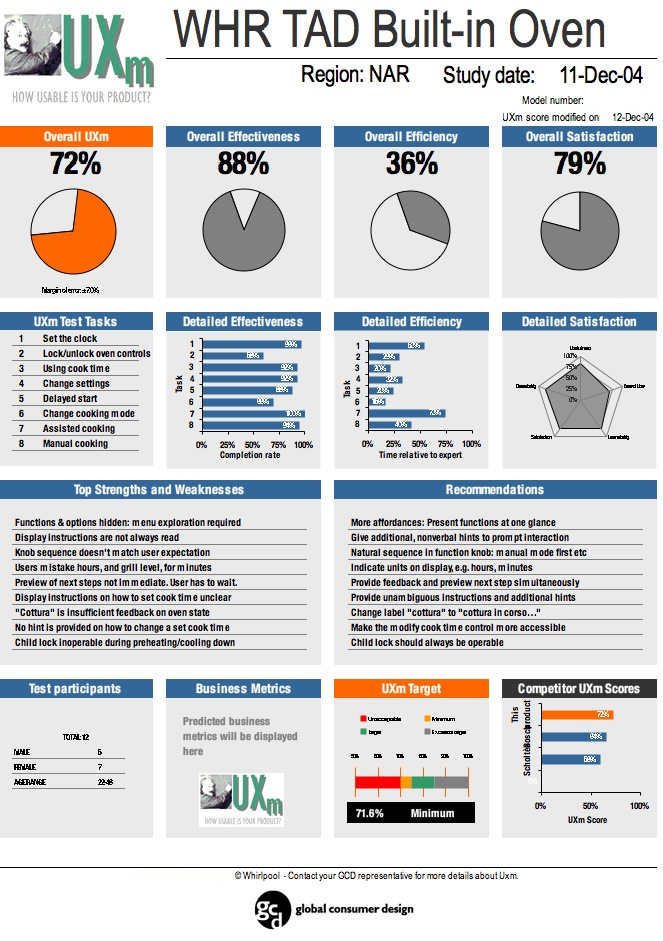Usability Experience Metric
2004
It's easy to imagine a work environment in which thick and detailed product usability reports are only valued and read by a few team members; it's a fairly common scenario. Executive management viewed such evaluations as "necessary evils." I decided to turn such an environment completed around by creating a system that would speak the language of business: numbers. I wanted to create a product evaluation system that could literally answer all the following questions: How usable is this product? Why? Compared to similar products? Different products? How is it, it's model line, or class of products trending? Use the numbers as a leading indicator by correlating to customer call support figures, sales, and customer satisfaction? We did it and communicated results in a simple to read and understand 1-page report per product! We ignited a metrics powder keg at Whirlpool.
GOALS:
- Determine how usable a product is
- Resolve a user experience product evaluation to a single number: Usability Experience Metric (UXm)
- Pin point areas responsible for the product’s score
- Use scores for trends and comparisons across similar and different products
- Create a 1-page report for executives
ACTIONS:
- Identified the need and opportunity
- Created the vision and the requirements
- Secured funding from several product divisions
- Guided and worked with specialists to create a comprehensive plan involving design, development, and deployment:
- New tools, algorithms, and processes
- Iterative testing to ensure integrity of the program
- Communication program for internal and external audiences
- Training program for sister design teams in Mexico, Italy, and Brazil
- Collaboration with call centers to update data collection and reporting
- Full range of internal and competitor products evaluated
RESULTS:
- Program was a huge success then and is still running today
- Executive managment buy-in; we had corporate VPs carrying binders filled with 1-pagers of all our products (and competitor products)
- Infused metrics into corporate culture
- Inspired brand-based success criteria
- Evaluations seen as competitive advantage (instead of necessary evil)
- Tools enabled easy and fast “what-if” scenarios to see which product changes could yield the best ROI
